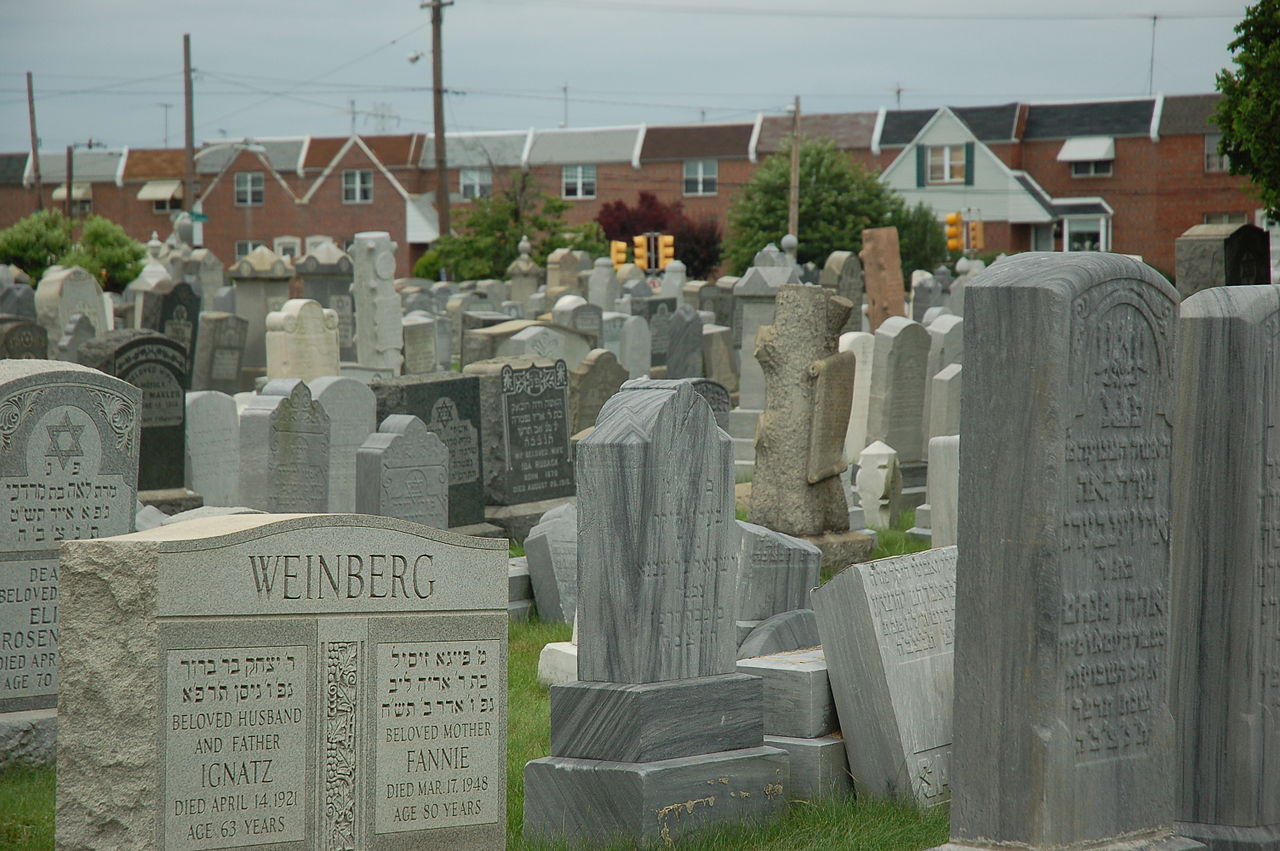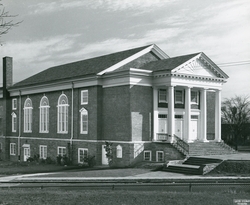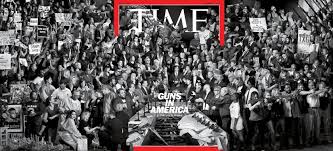Tree of Life, Pittsburgh
 I grew up in Philadelphia. Until the row houses were built along Summerville Ave, I could see Har Nebo Cemetery from the front of my house. It was one of the places the kids on my street would play. Not too often because cemeteries were scary. It was a Jewish Cemetery. It was from Mount Nebo that Moses was granted a view of the Holy Land. There’s a tradition that Moses is buried on the mount.
I grew up in Philadelphia. Until the row houses were built along Summerville Ave, I could see Har Nebo Cemetery from the front of my house. It was one of the places the kids on my street would play. Not too often because cemeteries were scary. It was a Jewish Cemetery. It was from Mount Nebo that Moses was granted a view of the Holy Land. There’s a tradition that Moses is buried on the mount.
 Temple Sholom was a conservative Jewish congregation that was across the street from my childhood parish, the Church of the Messiah. The synagogue was built in 1947.
Temple Sholom was a conservative Jewish congregation that was across the street from my childhood parish, the Church of the Messiah. The synagogue was built in 1947.
By law public schools had to read at least ten verses from the Bible, each day, in the classroom. When you got into the upper grades at Carnell the students would select and do the reading. I never once heard a New Testament reading. We gentiles would not be so rude as to impose that upon our Jewish classmates. Psalms 10 and 24 were favorites.
My best friend in Jr. High School was Arnie. We ate lunch together, talked, played in the school yard. Arnie was Jewish, as were most of the kids in the school.
The man who owned the candy store (cigarettes, candy, ice cream, pin ball machines) on the corner at the end of our street had numbers tattooed on his arm. As did one of my math teachers.
You get the idea.
There is no conversation to be had between anti-Semites and the rest of us. Well, there is a call to repentance and a willingness to help a person turn toward holiness and righteousness.
There is a conversation to be had with people who aren’t anti-Semites themselves but create a climate in which anti-Semitism festers. It’s hard to have the conversation because they can’t see how they are helping shape that climate. The President has a daughter and son-in-law who are Jewish. I’m sure he loves them. In recent years many Episcopalians have supported acts and groups that the overwhelming majority of American Jews see as anti-Semitic. We seem to do that while being quite outraged over some readings from John.
The parish conversation: How might we accept responsibility for the real-life impact of our actions? If we feel called to join calls for Palestinian justice how might we do that in a way that doesn’t end up colluding with Hamas and contribute to an anti-Semitic climate?
Here are a few resources from the Anti-Defamation League
An Index of Global anti-Semitic attitudes
News article: Comments of Jonathan Greenblatt, Director of the ADL
From PBS - American Anti-Semitism
 Guns in America
Guns in America
What happened in Pittsburgh has rekindled the tribal debate over guns. If you want to help parishioners have a conversation about gun policy in the nation, or their city, you might make use of this week’s issue of Time magazine.
The writer's set out to see if there was any common ground.
"The gun debate stands frozen in stalemate, advocates unable to agree even on the meaning of words. When one side appeals for “commonsense gun controls,” the other hears only “control.” When some say “law-abiding gun owners,” others only hear “gun.” "
"Even though they may disagree on guns, their opinions are grounded in lived experience and expressed with a sincerity and respect often missing in the national debate."
Articles introducing the project
The project “brought together 245 people from every imaginable vantage point: veterans and teachers, hunters and doctors, people afraid that guns may kill their children and people afraid they won’t have guns to protect their children. They include Lezley McSpadden, whose son Michael Brown was shot dead in Ferguson, Mo., which helped spark the Black Lives Matter movement; members of the trauma team that treated victims of the horrific 2016 sniper attack on Dallas police; House majority whip Steve Scalise, a gun-rights supporter who was critically injured in a shooting at a congressional baseball practice; and former Congresswoman Gabrielle Giffords.”
Listen to the video on this page
The Guns in America Project web site
A good place to begin is with the “Hear featured stories” at the bottom of the page. It offers reflective and respectful voices of people whose opinions are grounded in experience.
rag+